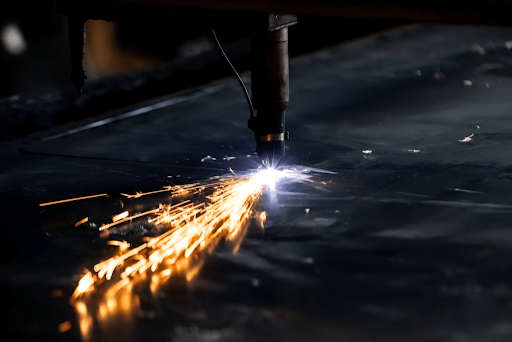The push toward smaller, smarter, and more reliable devices is transforming how electronics and precision-engineered parts are manufactured. From smartphones to medical devices, today’s products demand miniaturization, high reliability, and tight tolerances. Traditional joining methods like soldering, ultrasonic bonding, or resistance welding often struggle to meet these evolving requirements—especially when dealing with dissimilar metals, micro-components, or sensitive assemblies.
Enter laser welding, a technology uniquely suited to address these challenges. With its ability to create precise, clean, and reliable joints at micro and macro scales, laser welding has become a cornerstone of modern electronics and precision engineering.
Core Advantages of Laser Welding for Electronics & Precision Engineering
High Precision & Micro-Scale Control
Laser welding produces beams with spot sizes in the micrometer range, enabling welds so fine they can be applied to micro-pins, foils, and miniature assemblies. The minimal heat-affected zone (HAZ) reduces distortion and ensures surrounding components remain intact. Unlike mechanical joining, it’s a non-contact process, avoiding stress or deformation. Using a 2kw laser welding machine allows manufacturers to achieve this precision with sufficient power for both delicate and moderately thick materials, making it ideal for high-accuracy production environments.
Capability for Difficult Materials & Joints
Electronics often use materials like copper and aluminum, which are highly reflective and thermally conductive. With precise parameter control, lasers can weld these challenging metals and even join dissimilar materials—a growing need in advanced electronics.
Clean, Filler-Free, Strong Connections
Laser welding minimizes or eliminates filler materials, reducing contamination risk. The result: strong, hermetic seals and high-fatigue-resistant joints—critical for sensors, MEMS, and other high-performance devices.
High Throughput, Automation & Repeatability
Whether pulsed or continuous wave (CW), lasers operate at high speeds and pair seamlessly with automation, robotics, and machine vision systems. This ensures welds are repeatable across thousands of parts with minimal variability.
Key Applications in Electronics & Precision Fields
Microelectronics & MEMS
Laser welding supports micro-spot joining of delicate parts like microactuators and sensors, and can reliably weld thin copper or aluminum interconnects used in circuit packaging.
Semiconductor Packaging & Wafer-Level Assembly
Ultrafast laser techniques enable hermetic sealing of semiconductor packages and even welding of through-glass or through-silicon vias for optoelectronic devices.
Precision Instruments, Optics & Medical Devices
From miniature surgical tools to optical mounts, lasers deliver tight tolerance alignment and mechanically strong yet delicate welds.
Power Electronics & Battery Packs
Laser welding is widely used to connect busbars, thin foils, and current collectors in lithium-ion batteries, ensuring low-resistance, durable joints.
Flexible & Wearable Electronics
With their ability to weld thin and bendable substrates, lasers are opening doors for wearable tech and foldable devices.
Technical Challenges & Considerations
Surface & Material Variability
Reflectivity and surface conditions (like oxide layers) can affect absorption. Copper, for example, demands precise tuning of wavelength, power, and pulse duration.
Heat Control & Thermal Management
Maintaining part integrity is critical—especially near semiconductors or sensitive materials. Pulsed laser modes and optimized duty cycles are often used to control heat.
Joint Design & Geometric Constraints
Laser welding requires precise joint fit-up. Misalignments or air gaps can weaken weld strength, emphasizing the importance of accurate fixturing.
Monitoring, Feedback & Process Control
Advanced systems use optical, acoustic, and thermal sensors to monitor weld depth and detect defects in real time, enabling adaptive adjustments.
Reliability & Certification
For aerospace, medical, and semiconductor industries, welds must pass strict validation and certification, requiring rigorous process monitoring and documentation.
Emerging Trends & Future Directions
- AI & Machine Learning: Algorithms are being trained to adjust weld parameters on the fly, improving defect detection and reducing scrap.
- Ultrafast & Femtosecond Lasers: These allow welding of transparent materials like glass or silicon with virtually no collateral damage.
- Hybrid Welding Techniques: Combining laser and arc welding delivers both deep penetration and precision for specialized applications.
- Real-Time Imaging & Coherent Sensing: Inline imaging systems ensure accurate depth control and adaptive correction.
- Nano-Engineered Interfaces: Coatings and engineered alloys are enhancing weldability of reflective or difficult materials.
How 2kW Laser Welding Machine by Denaliweld Supports Precision / Electronics Use
The 2kW laser welding machine is designed with the needs of electronics and precision manufacturing in mind. With the ability to handle copper, aluminum, and other reflective materials, it provides consistent, high-quality welds even in challenging applications.
Key features include:
- Automation compatibility with robotic cells and CNC systems
- Inline monitoring support for quality assurance and defect prevention
- Pulse and continuous modes for flexibility in micro and macro welding tasks
- Compact, efficient design with robust thermal management to ensure repeatability
For electronics and communications manufacturers, Denaliweld provides a solution that balances power, precision, and integration, ensuring efficiency without compromising reliability.
Conclusion
Laser welding is becoming indispensable in electronics and precision engineering. Its ability to deliver clean, precise, and repeatable welds makes it the joining method of choice for applications ranging from microelectronics to medical devices.
While challenges like surface variability and process monitoring remain, innovations in AI, ultrafast lasers, and hybrid welding methods are quickly advancing the field.
For manufacturers adopting a 2kW laser welding machine from providers, the key lies in aligning machine features with application requirements. Done right, laser welding becomes not just a production tool, but a strategic enabler of next-generation electronics and precision devices.

